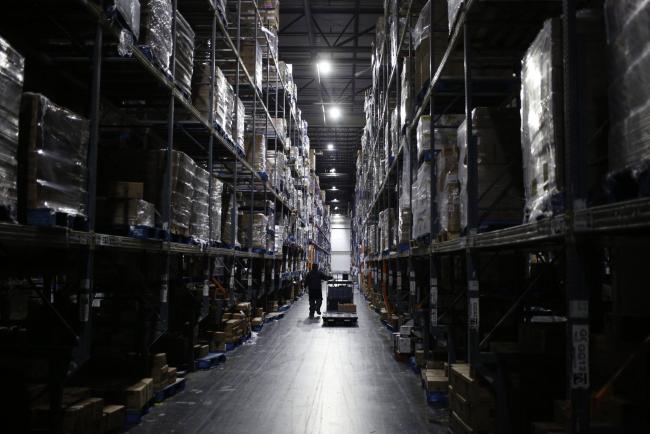(Bloomberg) -- As President Donald Trump pushes to restart the economy, the federal agency that’s supposed to protect employees from workplace hazards has been operating with historically low staffing.
The Occupational Safety and Health Administration had only 862 inspectors at the start of the year, the smallest number since 1975, according to a report by the pro-labor, nonprofit National Employment Law Project. The total was down from 952 in 2016 and a historic high of 1,469 in 1980.
“They cannot return people to work until they protect workers on the job, and they can’t protect workers on the job with voluntary guidelines,” the report’s author Deborah Berkowitz, who served as OSHA chief of staff under President Barack Obama, said in an interview.
The White House is urging businesses to open their doors in hopes of triggering a swift revival of the American economy, which has been largely shut down because of the coronavirus pandemic. Kevin Hassett, an economic adviser to Trump, said in an interview on CNBC Monday that essential businesses had begun to operate without major flare-ups and it was likely safe for non-essential businesses to reopen as well.
However, outbreaks have been reported at meatpacking plants, distribution centers and warehouses across the country that have remained open.
On April 10, OSHA announced that it would ease enforcement of existing record-keeping rules so that most employers won’t have to document whether employees with Covid-19 got the virus on the job. On April 13, the agency announced that it would generally try to deal with coronavirus-related complaints informally, by asking employers to investigate themselves, rather than sending in OSHA inspectors.
The Berkowitz report, being released Tuesday and based on data obtained via Freedom of Information Act requests, also faults Trump’s OSHA for failing to fill nearly half of its top leadership positions. The role of assistant secretary of Labor for occupational safety and health is among those currently vacant; the agency has been run by Loren Sweatt, a principal deputy assistant secretary of Labor.
“They were heading into this pandemic seriously, almost fatally weakened,” Berkowitz said.
In an emailed statement, the Department of Labor said that OSHA was protecting workers in “myriad” ways, including by reminding employers and workers of whistle-blower laws, and publishing industry-specific guidance for industries such as retail and delivery services.
“OSHA has the tools it needs to hold employers accountable if they expose workers to coronavirus by disregarding appropriate safety practices,” according to the statement.
1,400 Complaints Closed
“We have the tools we need and will use them if necessary,” Labor Secretary Eugene Scalia said during a April 23 conference call on the pandemic. He said existing regulations in areas like personal protective equipment already apply to the coronavirus.
Scalia added that most employers are working hard to protect their staff, “but we also know that, unfortunately, enforcement may be needed in some cases.”
OSHA has received more than 2,400 complaints related to the coronavirus, and has already closed 1,400 of them, Sweatt said on the conference call. She did not elaborate on how those cases were closed.
Labor advocates and Democratic lawmakers have criticized OSHA for not stepping up enforcement by issuing temporary emergency regulations, or by announcing a more muscular interpretation of the standards already on the books.
“OSHA and the U.S. Department of Labor have been missing in action since day one” of the crisis, George Washington University public health professor David Michaels, who ran OSHA under Obama and wasn’t part of the Employment Law Project report, said in an email. “If Secretary of Labor Eugene Scalia cannot lead the effort to stop the carnage and require employers to implement strong worker protections, it will be difficult to re-open the economy without making thousands of workers sick.”
The report also shows a 38% decline from 2016 to 2019 in the number of “significant” cases brought by OSHA -- an agency term for those cases that can result in the highest penalties on employers. The overall annual number of inspections under Trump has been less than 85% the rate under fellow Republican George W. Bush.
©2020 Bloomberg L.P.

